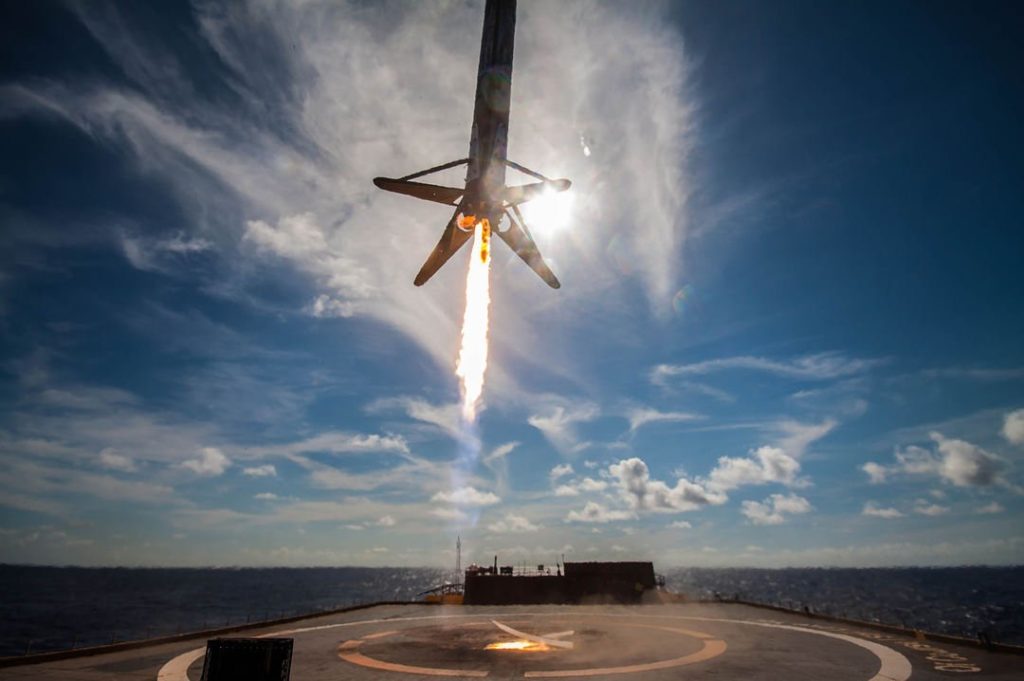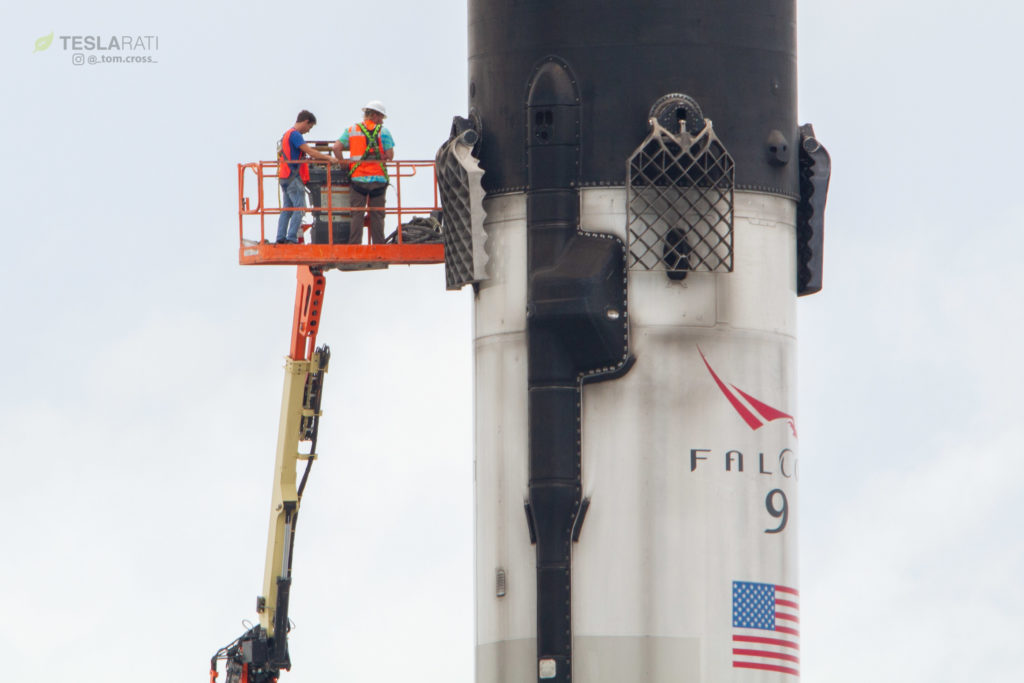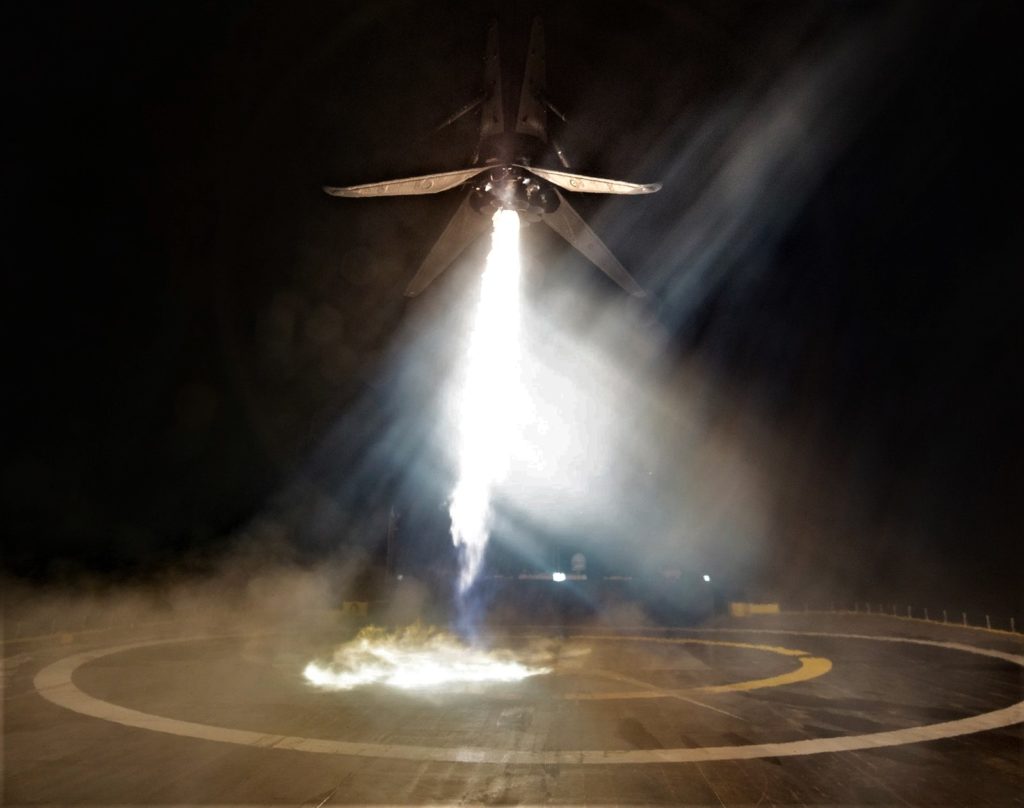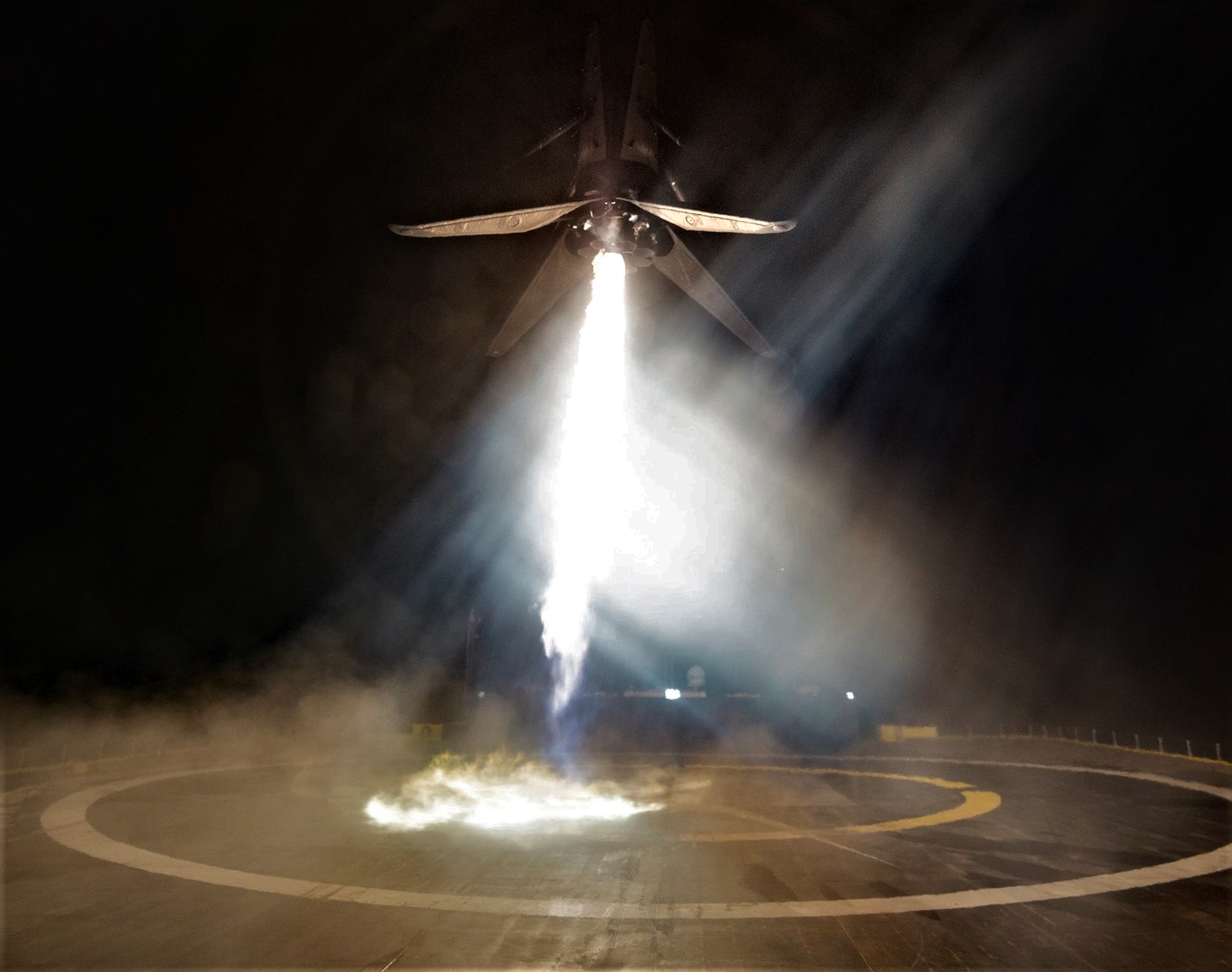
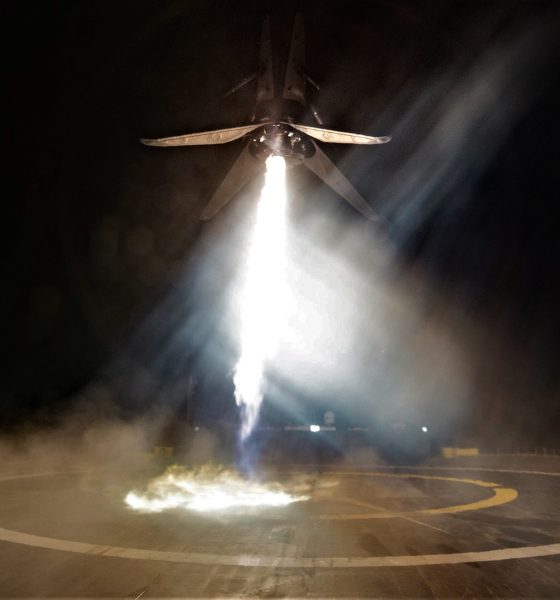
News
SpaceX’s next Falcon 9 Block 5 rocket launch and landing aligns for mid-September
SpaceX’s next rocket launch, a new Falcon 9 Block 5 vehicle carrying Telesat’s Telstar 18V geostationary communications satellite has slipped from an original launch target of August 22nd to no earlier than (NET) September 9th, pointing towards difficulties somewhere within the space launch apparatus.
While a two and a half week delay may feel immense for a SpaceX mission after an exceptionally productive 15 successful launches in 2018 (and a third of the year still to come), caution is key when dealing with rockets, and the slip should not significantly impact any near-term SpaceX launches thanks to an apparent dearth of available payloads between September and November.
Eastern Range updates with this moving a few weeks to *NET September 9*. We don't have a reason. https://t.co/jUSH1KnPfG
— NSF – NASASpaceflight.com (@NASASpaceflight) August 22, 2018
The cause of the ~ 18-day delay is currently unknown but presumably involves some combination of technical or systematic difficulties with the rocket (Falcon 9 booster B1049, an upper stage, and a payload fairing), the launch pad, the payload (a complex, several ton communications satellite), or the range (weather tracking, radar, guarding keep-out zones).
Thanks to the sheer complexity of large, orbital rockets and the infrastructure needed to support and launch them, as well as the fact that SpaceX debuted the current Block 5 upgrade of Falcon 9 barely three months ago, it’s actually more surprising than anything that SpaceX launches haven’t had even a little bit more drama lately. In fact, the rocket version’s actual inaugural launch in May 2018 happened to feature the only launch scrub/abort of a Block 5 rocket thus far, now with three new booster missions and one booster reuse under its belt.
- Falcon 9 B1046 seen landing on OCISLY for the first time, May 2018. (SpaceX)
- B1046 returned to Port Canaveral shortly after its May 4 debut, and is now being carefully analyzed as pathfinder hardware. (Tom Cross)
- B1046 lands on drone ship Of Course I Still Love You for the second time in three months, August 2018. (SpaceX)
A sample size of four may not exactly be a boon for statistical confidence, but Block 5’s thus far routine debut and launch track record suggest that there’s a strong chance Telstar 18V’s launch delay is unrelated to its Falcon 9 booster. Fairing availability could potentially be a problem thanks to manufacturing teething pains for the newest “Fairing 2.0” upgrade, a strong contender given that a month will now separate Telstar 18V from SpaceX’s previous Florida launch (Telkom 4, August 7th), compared to just two weeks before the delay.
After launching Telstar 18V above the vast majority of Earth’s atmosphere, Falcon 9 B1049 will flip around while hypersonic and arc towards a landing aboard SpaceX’s Florida-based autonomous spaceport drone ship Of Course I Still Love You (OCISLY), stationed roughly 650 km east of its LC-40 launch pad. If the SpaceX-launched Telstar 19V satellite is representative of its 18V sister satellite, Telstar 18V is an extremely heavy satellite heading to a high-energy geostationary transfer orbit, meaning that Falcon 9’s reentry and landing are likely to be relatively hot.
#Telstar18V Launch Hazard Areas. Planned droneship landing position 655km downrange. https://t.co/5vo6yRthAN pic.twitter.com/WHLmqXN8wC
— Raul (@Raul74Cz) August 22, 2018
For prompt updates, on-the-ground perspectives, and unique glimpses of SpaceX’s rocket recovery fleet check out our brand new LaunchPad and LandingZone newsletters!

News
Tesla is not sparing any expense in ensuring the Cybercab is safe
Images shared by the longtime watcher showed 16 Cybercab prototypes parked near Giga Texas’ dedicated crash test facility.

The Tesla Cybercab could very well be the safest taxi on the road when it is released and deployed for public use. This was, at least, hinted at by the intensive safety tests that Tesla seems to be putting the autonomous two-seater through at its Giga Texas crash test facility.
Intensive crash tests
As per recent images from longtime Giga Texas watcher and drone operator Joe Tegtmeyer, Tesla seems to be very busy crash testing Cybercab units. Images shared by the longtime watcher showed 16 Cybercab prototypes parked near Giga Texas’ dedicated crash test facility just before the holidays.
Tegtmeyer’s aerial photos showed the prototypes clustered outside the factory’s testing building. Some uncovered Cybercabs showed notable damage and one even had its airbags engaged. With Cybercab production expected to start in about 130 days, it appears that Tesla is very busy ensuring that its autonomous two-seater ends up becoming the safest taxi on public roads.
Prioritizing safety
With no human driver controls, the Cybercab demands exceptional active and passive safety systems to protect occupants in any scenario. Considering Tesla’s reputation, it is then understandable that the company seems to be sparing no expense in ensuring that the Cybercab is as safe as possible.
Tesla’s focus on safety was recently highlighted when the Cybertruck achieved a Top Safety Pick+ rating from the Insurance Institute for Highway Safety (IIHS). This was a notable victory for the Cybertruck as critics have long claimed that the vehicle will be one of, if not the, most unsafe truck on the road due to its appearance. The vehicle’s Top Safety Pick+ rating, if any, simply proved that Tesla never neglects to make its cars as safe as possible, and that definitely includes the Cybercab.
Elon Musk
Tesla’s Elon Musk gives timeframe for FSD’s release in UAE
Provided that Musk’s timeframe proves accurate, FSD would be able to start saturating the Middle East, starting with the UAE, next year.

Tesla CEO Elon Musk stated on Monday that Full Self-Driving (Supervised) could launch in the United Arab Emirates (UAE) as soon as January 2026.
Provided that Musk’s timeframe proves accurate, FSD would be able to start saturating the Middle East, starting with the UAE, next year.
Musk’s estimate
In a post on X, UAE-based political analyst Ahmed Sharif Al Amiri asked Musk when FSD would arrive in the country, quoting an earlier post where the CEO encouraged users to try out FSD for themselves. Musk responded directly to the analyst’s inquiry.
“Hopefully, next month,” Musk wrote. The exchange attracted a lot of attention, with numerous X users sharing their excitement at the idea of FSD being brought to a new country. FSD (Supervised), after all, would likely allow hands-off highway driving, urban navigation, and parking under driver oversight in traffic-heavy cities such as Dubai and Abu Dhabi.
Musk’s comments about FSD’s arrival in the UAE were posted following his visit to the Middle Eastern country. Over the weekend, images were shared online of Musk meeting with UAE Defense Minister, Deputy Prime Minister, and Dubai Crown Prince HH Sheikh Hamdan bin Mohammed. Musk also posted a supportive message about the country, posting “UAE rocks!” on X.
FSD recognition
FSD has been getting quite a lot of support from foreign media outlets. FSD (Supervised) earned high marks from Germany’s largest car magazine, Auto Bild, during a test in Berlin’s challenging urban environment. The demonstration highlighted the system’s ability to handle dense traffic, construction sites, pedestrian crossings, and narrow streets with smooth, confident decision-making.
Journalist Robin Hornig was particularly struck by FSD’s superior perception and tireless attention, stating: “Tesla FSD Supervised sees more than I do. It doesn’t get distracted and never gets tired. I like to think I’m a good driver, but I can’t match this system’s all-around vision. It’s at its best when both work together: my experience and the Tesla’s constant attention.” Only one intervention was needed when the system misread a route, showcasing its maturity while relying on vision-only sensors and over-the-air learning.
News
Tesla quietly flexes FSD’s reliability amid Waymo blackout in San Francisco
“Tesla Robotaxis were unaffected by the SF power outage,” Musk wrote in his post.

Tesla highlighted its Full Self-Driving (Supervised) system’s robustness this week by sharing dashcam footage of a vehicle in FSD navigating pitch-black San Francisco streets during the city’s widespread power outage.
While Waymo’s robotaxis stalled and caused traffic jams, Tesla’s vision-only approach kept operating seamlessly without remote intervention. Elon Musk amplified the clip, highlighting the contrast between the two systems.
Tesla FSD handles total darkness
The @Tesla_AI account posted a video from a Model Y operating on FSD during San Francisco’s blackout. As could be seen in the video, streetlights, traffic signals, and surrounding illumination were completely out, but the vehicle drove confidently and cautiously, just like a proficient human driver.
Musk reposted the clip, adding context to reports of Waymo vehicles struggling in the same conditions. “Tesla Robotaxis were unaffected by the SF power outage,” Musk wrote in his post.
Musk and the Tesla AI team’s posts highlight the idea that FSD operates a lot like any experienced human driver. Since the system does not rely on a variety of sensors and a complicated symphony of factors, vehicles could technically navigate challenging circumstances as they emerge. This definitely seemed to be the case in San Francisco.
Waymo’s blackout struggles
Waymo faced scrutiny after multiple self-driving Jaguar I-PACE taxis stopped functioning during the blackout, blocking lanes, causing traffic jams, and requiring manual retrieval. Videos shared during the power outage showed fleets of Waymo vehicles just stopping in the middle of the road, seemingly confused about what to do when the lights go out.
In a comment, Waymo stated that its vehicles treat nonfunctional signals as four-way stops, but “the sheer scale of the outage led to instances where vehicles remained stationary longer than usual to confirm the state of the affected intersections. This contributed to traffic friction during the height of the congestion.”
A company spokesperson also shared some thoughts about the incidents. “Yesterday’s power outage was a widespread event that caused gridlock across San Francisco, with non-functioning traffic signals and transit disruptions. While the failure of the utility infrastructure was significant, we are committed to ensuring our technology adjusts to traffic flow during such events,” the Waymo spokesperson stated, adding that it is “focused on rapidly integrating the lessons learned from this event, and are committed to earning and maintaining the trust of the communities we serve every day.”
